Last month’s dissertation update might have suggested that I haven’t been doing much lately while waiting for the defense. That couldn’t be further from the truth. Over at the Barry Art Museum we’ve just celebrated the opening of our latest exhibition, Message in a Bottle. Let’s take a look!
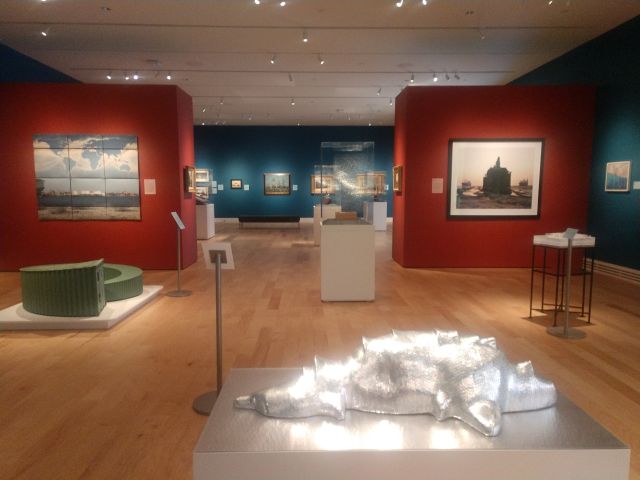
About Message in a Bottle
Message in a Bottle considers the maritime culture of Hampton Roads through a call and response between past and present. From the ironclad battles of the Civil War to the maritime departments at Old Dominion University today, waterways have indelibly shaped this region’s histories, technologies, and cultures. Yet the maritime connections at Hampton Roads extend far beyond local landmarks and industries. Whether we consider the physical movements of global shipping networks or representations of maritime culture in private and public art collections, waterways connect this region to the world.
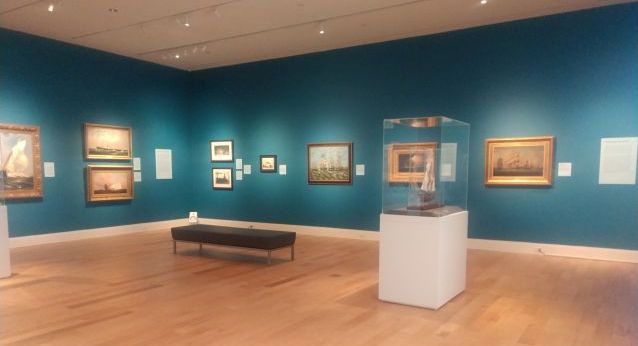
The exhibition is divided into two sections. One half focuses on historical works, and the other concentrates on contemporary art. The show opens with the collection of Museum co-founder Richard F. Barry, whose holdings of historical paintings, maps, and posters recount lives experienced in and around the sea. Maps and prints spanning the seventeenth through the nineteenth centuries establish a local sense of place. Paintings of battleships, sailboats, and shipyards connect Hampton Roads to the larger world of maritime culture through technology, the military, and the art of collecting itself.
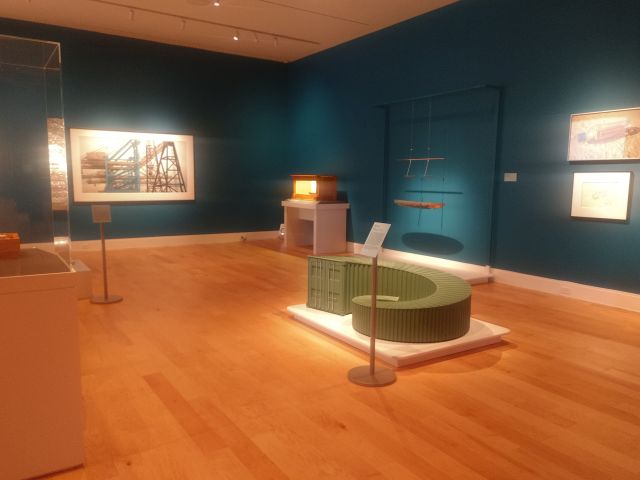
In the second half of the show, contemporary artists consider twenty-first-century maritime culture and its impact on modern life. Several of these artists include members of the ODU faculty, reflecting the Museum’s ongoing commitment to working with the University’s art department. Additionally, throughout the exhibition, works from the Chrysler Museum, the Mariners’ Museum, the Goode Collection, and the Glass Light Hotel Gallery emphasize the richness of this region’s public and private collections. Through these selections, we reflect on Hampton Roads’ varied and complicated maritime legacies.
How It Started
The catalyst for this exhibition was the Museum’s collection of historical maritime art. Maritime culture has always been of great interest to Richard Barry, so these paintings are especially important to him. Given their personal significance to Mr. Barry, curating a special exhibition for these works was always a priority for the Museum.
While the Museum began planning a maritime exhibition a few years ago, I started researching it in earnest in the spring of 2023. The goal was to recontextualize the paintings by pairing them with contemporary art.
Curating this exhibition was a somewhat different process because I couldn’t be present for all of it. A few months after I started my preliminary research for the show, I had to step away during the summer. This was due to my contractual obligations with the Halleran Dissertation Fellowship. Normally recipients aren’t supposed to maintain outside employment while on the fellowship. Given my working history in museums though, I negotiated a compromise with the Graduate Dean. I’d work with the Museum in the fall and spring, but not during the summer. For three months, I’d focus exclusively on dissertation work.
Rather than pause the show altogether, I handed off my research to the Barry Art Museum staff and a guest curator. While I conducted dissertation research in New York and College Park, they refined my big ideas into a preliminary checklist. In the fall, I picked up where they left off by refining the checklist and developing themes for the various works. While all exhibitions are collaborative in nature, my Halleran schedule meant that this one was especially team-based.
Curating Message in a Bottle
Like any show, this exhibition went through a lot of changes. Initially, I experimented with mixing historical and contemporary materials, but eventually separated them. The exhibition also changed galleries. Originally we were going to stage the show on the second floor gallery. We moved downstairs because we didn’t want to move all the glass that was already in there. We also thought the higher ceilings in the first floor gallery would give the works more room to breathe.
The Museum also acquired new maritime works while I worked on the show. As a result, I updated the layout by adding works, removing them, or stacking pieces to accommodate more art. There was no shortage of good material, and the biggest challenge was avoiding overstuffing the gallery.
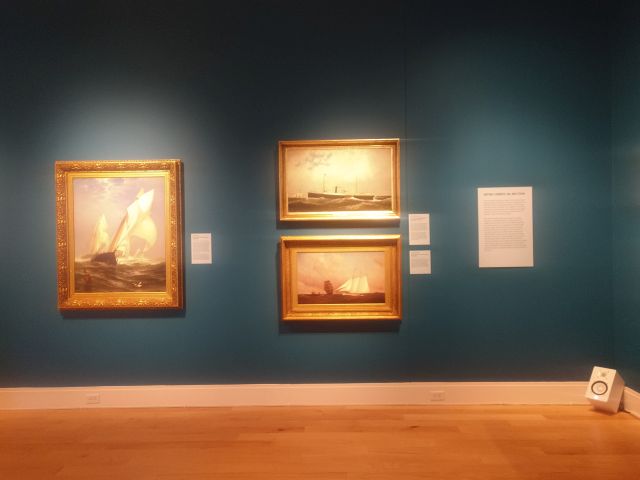
To organize all these objects, I sorted the works into different themes. In the historical section, I have an area focusing on local places and landmarks, a wall focusing on Norfolk’s relationship with the Navy, the role of technology in maritime culture, and the world of maritime art collecting. In the contemporary section, different works meditate on the ecological impact of shipping, the intersections between maritime culture and the creative process, and Norfolk’s sense of place in the 20th and 21st centuries.
While both sides of the exhibition address many topics, the entire show considers the role of waterways in fostering connections. More specifically, while the historical side focuses primarily on ships, i.e. the means through which regions like Hampton Roads have achieved global connections, the contemporary side addresses the repercussions of those connections.
Love the Color
One aspect of Message in a Bottle that I’m especially proud of is its use of color. For most of my time in Roswell, I curated almost exclusively on white walls because we had limited personnel for repainting galleries. For Magical & Real, one of the few times I had the galleries extensively repainted, I didn’t actually pick the colors. Rather, I went with the same colors my co-curator had selected for the Doylestown installation to maintain consistency. Similarly, for Motion/Emotion in 2022, we kept the same shade of dark gray used for the previous show, as we all figured it suited the theme.
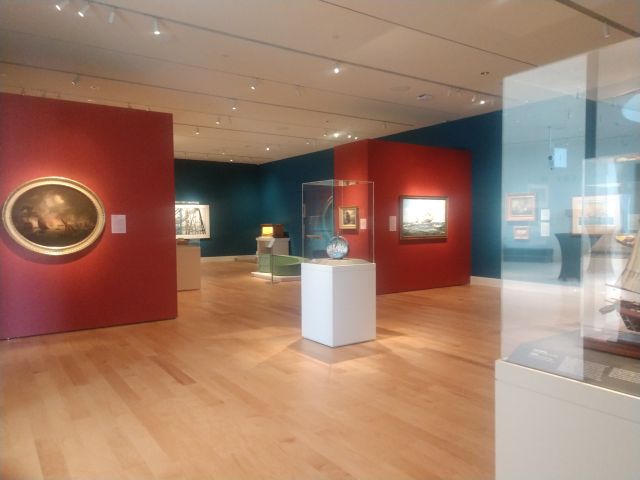
For this exhibition however, I had the galleries repainted with colors I’d picked out. And I decided to go bold. For the main color, I picked a deep blue-green tone that echoed the historical paintings. To identify shades that matched the artwork, I took a pantone booklet and held the samples to the paintings.
For the temporary walls, I opted for a complementary scheme by choosing a deep reddish brown. I had two reasons for this. First, I wanted a color that suited works with a warm rather than cool palette. I knew that paintings with more green than blue in their water wouldn’t look as well against the deep teal. Second, I was referencing the red flags that appear in so many of the paintings, bits of bright fabric that punctuate the blue of the waves and sky.
After years of curating against white walls, it was very satisfying to see these deep, rich colors come together. And given that every group I have taken through this exhibit has commented on the colors, I know my choices have left a strong impression.
What’s in Message in a Bottle?
The works in Message in a Bottle vary in scale, materials, and content. I can’t go over everything in this post, but here are a couple of pieces to whet your appetite.
This dramatic, fiery night scene depicts the Bombardment of Algiers, a pivotal moment from the Second Barbary Pirate War. Barbary pirates were North African raiders active in the Mediterranean from about 1500 to 1800 CE, attacking ships to steal cargo and sell crew members into slavery. European countries paid tribute to the pirates for safe passage, but the American colonies declined this protection, leaving their ships vulnerable to attack. After the War for Independence, the newly-formed United States addressed the Barbary pirate problem by attacking directly, allying with several European countries. Two Barbary pirate wars ensued, the first lasting from 1801 to 1805, and the second taking place in 1816.
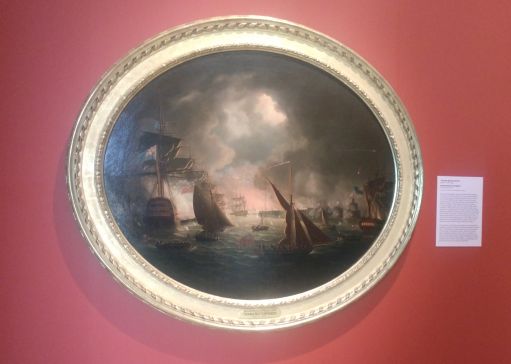
This painting depicts a combined British and Dutch assault on Algiers, the center of the Barbary Empire. While the US Navy was not directly involved in this conflict, its instigation of the First Barbary Pirate War inspired subsequent European attacks. Hampton Roads did not participate directly in these wars, but their impact on international shipping affected this region.
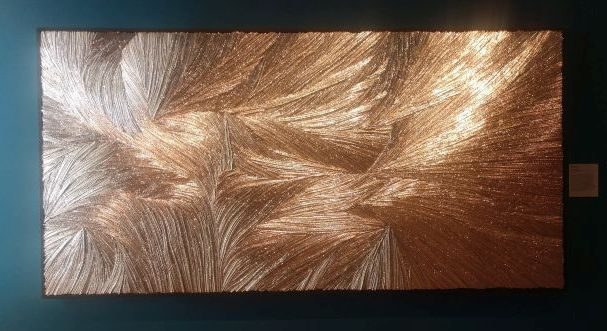
One of the many striking pieces in the contemporary section is Melissa Hill’s Concurrently. This large abstract work depicts the currents of the Atlantic Oceans, which we rely on for shipping. The current patterns have been made out of thermal bags. This packaging is both ubiquitous in shipping and is the kind of detritus that often ends up in the ocean. Hill envisions these thermal bags as a metaphor for the global warming that often accompanies climate change, which international shipping exacerbates.
Come Visit!
Message in a Bottle is the first exhibition I’ve opened as the Barry Art Museum’s full-time curator. While I’ve worked on several shows before this one, I was a contractor. I contributed content and worked closely with the team, but I didn’t really represent the museum per se. As Curator of Art though, I unquestionably serve as a representative of the institution. I can’t think of a better way to start my new role here than with a show as eclectic and interdisciplinary as this one.
I like to joke that Message in a Bottle has something for everybody, but it really does. Whether you’re interested in naval history, local sites, the impact of climate change, or the creative process itself, we have works that will interest you. And that’s due in no small part to the collaborative nature of the show. From the insights of our advisory committee to the creativity of our education and events managers, lots of people contributed to this exhibition and they deserve recognition for their work.
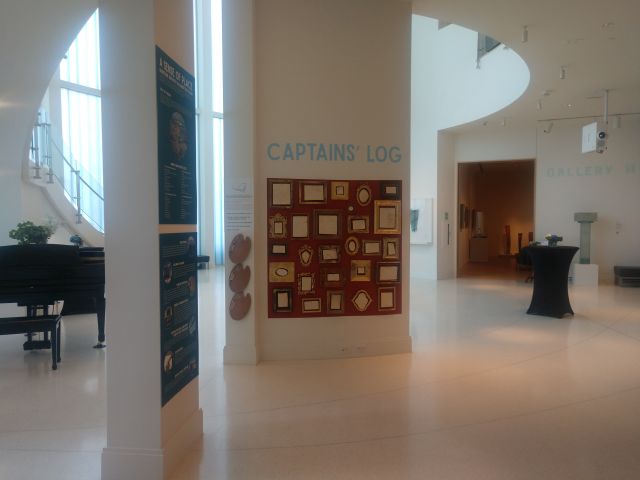
Message in a Bottle is on view through January 5, 2025. We’ll have lots of programming available while the show is up, from lectures to poetry readings to film viewings. We’ve also got a fantastic interactive station created by our Education Manager, Suzanne Peterson, to further enrich your visit. So if you’re in the area, be sure to visit!